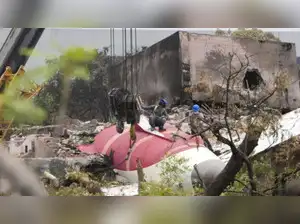As the investigation into the Air India Flight AI 171 crash progresses, aviation expert Captain (Retd.) Ehsan Khalid has proposed a compelling alternative explanation: an electrical or software fault may have triggered the fuel control switches to move to the “CUTOFF” position automatically—without any deliberate action by the pilots.
⚡ An Uncommanded Shift?
According to AAIB’s preliminary report, both engine fuel-control switches were found in the “CUTOFF” position within one second of liftoff, leading to dual engine shutdown and confusion in the cockpit—captured in the cockpit voice recorder, where one pilot asked, “Why did you cut it off?” and the other replied, “I did not”
Captain Khalid, a former Air Force pilot, suggests:
“An electrical malfunction could also have resulted in the aircraft’s fuel switches being cut off soon after takeoff… 0 to 1 or 1 to 0 [electrical] position could have transitioned because of an electrical malfunction or a signal malfunction while the switch could be at the same point.”
He notes that AAIB’s cautious phrasing—referring to fuel being “cut off” rather than the switches being “moved”—could imply recognition of a possible uncommanded action .
🧩 Technical Flaws Under Review
Investigators are reportedly examining whether a software or electrical glitch—potentially involving the Thrust Control Module (TCM) or FADEC logic—caused an unintended switch transition to “CUTOFF.” Moneycontrol reports confirm that the probe is focused on the possibility of a “system-triggered un-commanded transition”
Further, Livemint cites sources indicating AAIB is probing “un-commanded transition of the fuel control switches,” possibly triggered by a glit.
🧭 Implications for Investigation & Aviation Safety
- Pilot accountability vs system fault: Until the final report is released, distinguishing between pilot action and system error remains central.
- Aircraft design oversight: If electrical faults are confirmed, it could prompt review of Boeing 787 design and software safeguards.
- Safety recommendations: Final findings may recommend cockpit video recorders or enhanced system fail-safes, echoing IATA’s calls for greater transparency.

